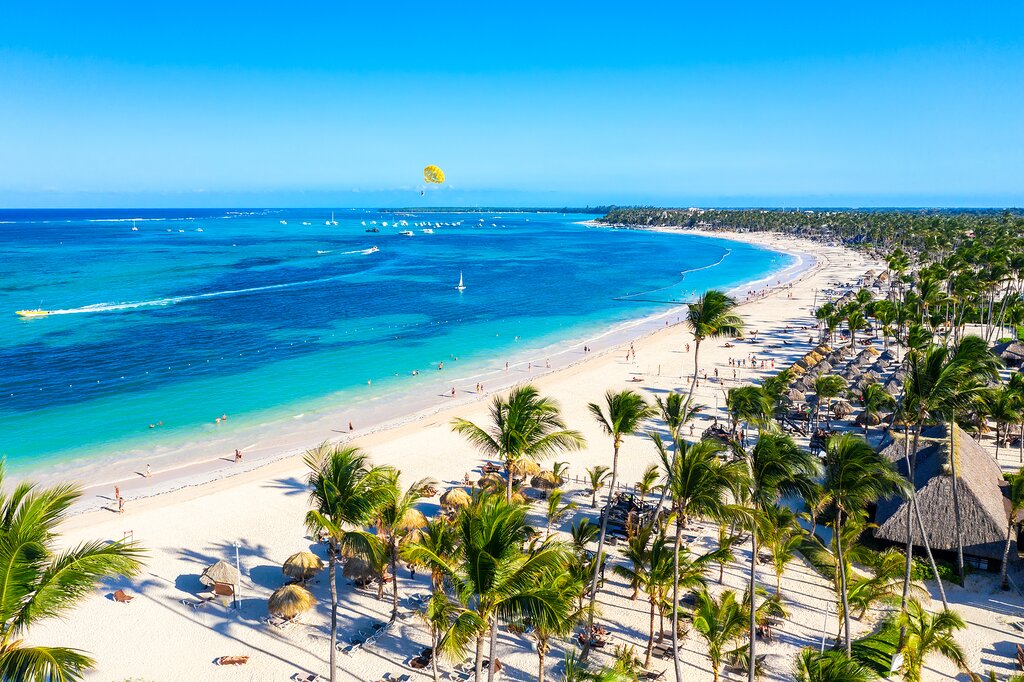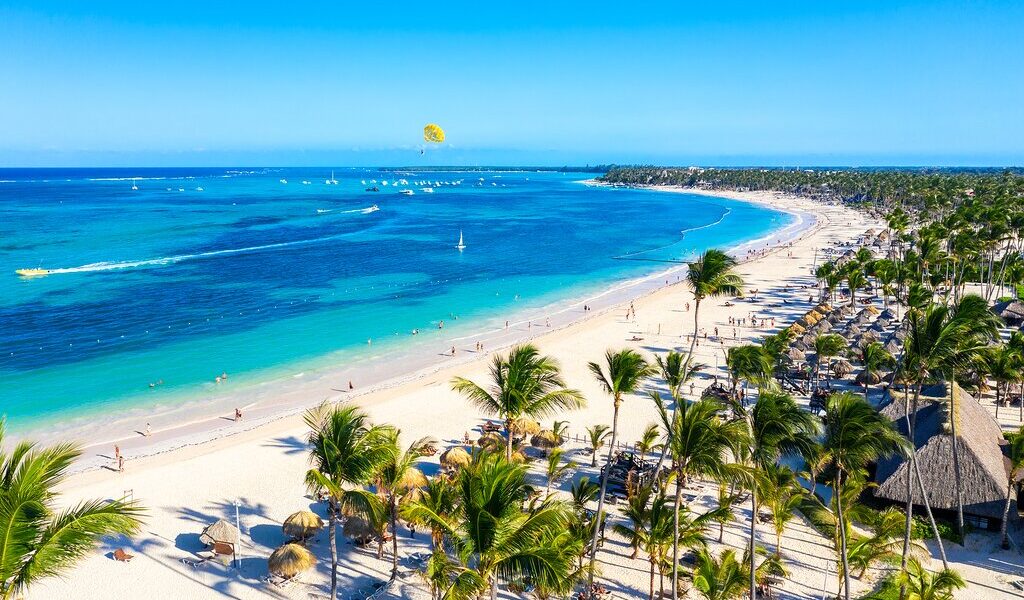
The Dominican Republic is a great destination at any time of year, but the best season to visit depends on your travel priorities. Whether you plan to bask in the year-round warmth of a beach vacation, immerse yourself in the annual four-day jazz festival hosted in Cabarete, Puerto Plata and Sosúa, or trek to the summit of Pico Duarte, you’ll want to learn more about the country’s seasonal and regional variations before planning your trip.
## Delving Deeper: Planning Your Dominican Republic Adventure
Embarking on a journey to the captivating Dominican Republic requires thoughtful preparation, particularly when considering the seasonal and regional weather nuances that shape this beautiful island nation. While the Dominican Republic generally boasts a warm and relatively humid climate throughout the year, the diverse landscapes and varying elevations contribute to distinct regional shifts in temperature and rainfall patterns. It’s important to remember that although weather varies, the hours of daylight remain relatively consistent, providing ample opportunity to explore regardless of the season.
As a general guideline, travelers should anticipate predominantly warm and clear days during the winter months. Conversely, the summer season often brings hot, rainy, and potentially stormy weather, including the possibility of hurricanes, accompanied by a noticeable surge in humidity. Notably, the northeastern region of the Dominican Republic experiences the highest rainfall due to its direct exposure to the trade winds. In contrast, the southern coast tends to be somewhat drier and cooler during the summer months, while the southwestern region, characterized by its cactus-studded terrain, resides in a rain shadow, resulting in intense heat during the summer.
The warm and dry winter months mark the peak tourist season, particularly in popular beach resorts such as Punta Cana and other coastal destinations. During this period, these resorts become bustling hubs of activity, with hotels often reaching full capacity and prices for accommodations, airfares, and car rentals reaching their highest levels. For travelers seeking a more tranquil and authentic experience, venturing to more remote areas such as Barahona can offer respite from the crowds, regardless of the time of year.
| Seasons | Pros | Cons | Best for | Where to Visit |
| Nov-Feb (Winter) | Pleasant weather conditions prevail, characterized by warmth and clear skies, perfect for outdoor activities. The vibrant Carnival festivals add a cultural dimension to your trip. | The influx of tourists during peak season leads to crowded attractions and elevated prices for accommodations and services. The north shore and the Cordillera Central may experience periods of rainfall. | Ideal for sunbathing on the pristine beaches, immersing yourself in the festive atmosphere of Carnival, and embarking on a challenging hike to the summit of Pico Duarte. | Experience the vibrant Carnaval celebrations in La Vega and Santiago de los Caballeros. Witness the awe-inspiring whale-watching opportunities in Samaná. |
| Mar-May (Spring) | Benefit from reduced prices after March, offering more affordable travel options. Enjoy fewer crowds compared to the peak winter season. | The weather can be unpredictable, with warmer temperatures and occasional rainfall. Beaches tend to be crowded with locals during the Easter holiday. | Perfect for exploring the diverse cities and soaking up the sun on the beautiful beaches. | Attend the unique Cimarrón Festival in Cabral, a vibrant cultural celebration. |
| Jun-Oct (Summer & Autumn) | Take advantage of the least expensive time of the year for travel, making it ideal for budget-conscious travelers. | Be prepared for rainy and humid weather conditions, with the potential for hurricanes. The southwestern region of the Dominican Republic can experience extremely high temperatures. | Focus on exploring cities, museums, and other indoor attractions to avoid the adverse weather conditions. | Immerse yourself in the vibrant atmosphere of the Festival de Merengue in Puerto Plata. |
## A Closer Look at Winter (November to February)
The period from November to February, affectionately referred to as *‘verano,’* or summer, by the locals, represents the Dominican Republic’s busiest season for tourism. During the peak months of January and February, the picturesque beaches of Punta Cana, Sámana, and the resorts along the north coast can feel quite congested. The weeks surrounding Christmas and New Year are particularly crowded. February is a prime month for popular festivals, and the entire country resonates with celebrations. Virtually every town in the Dominican Republic hosts its own unique carnival, showcasing distinct representations of the devil, along with traditional Dominican folklore characters and comparsas (dance troupes) that are specific to each city.
Hotel rates experience a significant surge during these months, as do car rental prices and the costs of many other travel-related services. Unlike many neighboring islands, such as Cuba, the Dominican Republic has a relatively limited number of private bed and breakfast establishments. Therefore, it is highly recommended to plan well in advance to secure your preferred hotels, as well as car rentals and domestic air reservations.
The Dominican Republic’s popularity during midwinter stems from its favorable weather conditions. The season offers warm tropical temperatures beneath stunning blue skies, providing a welcome escape for those who reside in North America and northern Europe, where winter often brings snow and cold weather. Along the shore, refreshing trade winds from the east provide a pleasant respite from the sun’s intensity. Packing rain gear is generally unnecessary, although occasional rainfall can occur, particularly along the north coast and in the highlands around Jarabacoa, where temperatures are typically about 15°F cooler than in areas such as Punta Cana. If you plan to hike to the summit of Pico Duarte, it’s advisable to pack a fleece jacket and perhaps even warmer clothing to ensure your comfort in the cooler mountain temperatures.
### Unveiling Winter Events
**Dominican Republic Jazz Festival, Cabarete, Puerto Plata, Sosúa, & Santiago de los Caballeros:** Prepare to be mesmerized as Dominican and international artists take center stage during five days of electrifying jazz performances in these vibrant beach towns each November.
**Colonial FEST, Santo Domingo:** Immerse yourself in the rich cultural heritage of the Dominican Republic at this festival, which showcases the arts, crafts, music, gastronomy, and history of the Dominican Republic. Enjoy outdoor concerts and fairs throughout the historic Zona Colonial.
**Merengue Típico Festival Guananico, Puerto Plata:** Experience the infectious energy of merengue music as Dominicans flock to town for this annual celebration each November, showcasing the country’s love for this iconic genre.
**Festival El Santo Cristo de Bayaguana, San Juan Bautista de Bayaguana:** Witness the unique “Offering of the Bulls” held over four days, starting on December 28, when vaqueros (cowboys) lead young bulls into town for sale on the final day. Immerse yourself in the town’s lively atmosphere, filled with song, improvised verse, poetry sung a cappella, dance, and even fireworks.
**Guloya Festival, San Pedro de Macorís:** Witness the vibrant Afro-Dominican revelry that kicks off every year on January 1 with Junkanoo-style costumes and dance. This cultural spectacle is recognized by UNESCO as a Masterpiece of the Oral and Intangible Patrimony of Humanity.
**Pilgrimage of Virgen de Altagracia, Higüey:** Join the nation’s most important religious pilgrimage, held each January 21, where many of the devout crawl on their knees to pray to the nation’s patron saint.
**Día de Juan Pablo Duarte, nationwide:** Participate in public fiestas held in all major towns on January 26 to celebrate the birth date of the ‘Father of the Country,’ Juan Pablo Duarte.
**Carnaval de Santiago, Santiago de los Caballeros:** Experience the vibrant energy of this lively carnival in February, second only to that of La Vega in size and importance. Look out for the masked figures of renown, the devil-like lechones (piglets) with long bull-like horns.
**Carnaval Vegano, La Vega:** Immerse yourself in the biggest and most vibrant of the nation’s carnivals, known for its exotic and exaggerated devil masks and the use of vejigas (rope whips) on anyone in their path.
**Independence Day, Santo Domingo:** Witness the raucous street celebrations and a military parade along the Malecón on February 27, commemorating the day in 1844 when the Dominican Republic regained its independence from Haiti.
## Springtime Splendor (March to May)
As March arrives, the Dominican Republic gradually warms up, and by May, the likelihood of prolonged afternoon downpours increases, signaling the approach of the wet season. Even the semi-arid southwestern region of the country typically experiences a slight increase in rainfall during May. While March is still considered part of the high season, beach resorts remain popular destinations for tourists.
Easter Week is a particularly busy time, as locals from Santo Domingo and other towns flock to the beaches, leading to the closure of many urban businesses. For travelers interested in immersing themselves in local culture, most cities host Easter celebrations complete with elaborate religious processions.
### Springtime Events
**Cimarrón Festival, Cabral:** Partake in this unique celebration, a blend of religious procession and carnival, where Catholicism and African religious elements merge to form Afro-Dominican santería. Admire the cachuas, festive devils adorned in horned masks.
**Semana Santa parades, Santo Domingo:** Witness solemn Easter Week processions winding through the Zona Colonial, culminating in evening mass at the Cathedral.
## Summer & Autumn Adventures (June to October)
The majority of rainfall occurs during the five-month ‘wet season’ (referred to as *‘invierno,’* or winter, by the locals), which also coincides with the low season for tourism. While most rain falls in predictable heavy afternoon downpours following sunny mornings, longer-lasting storms can also occur. This period also falls within hurricane season, though the Dominican Republic experiences a hurricane approximately once every four years on average (with September and October being the peak months). Many travelers enjoy storm-free vacations during this time of year. During the summer and autumn months, the air is saturated with humidity, and even the nights can feel like you’re in a sauna.
The Cordillera Central and other upland regions receive the most rainfall, nurturing lush rainforests. When the clouds part, the southwest typically becomes the hottest region of all, often uncomfortably so, with intense sun exposure.
Despite the weather conditions, there are significant advantages to traveling during the off-season. Budget-conscious travelers will appreciate the lower lodging rates, and beach hotels often fill up with Dominican families taking advantage of discounted packages. Car rentals are easier to secure during this time, and you’ll have a better chance of getting reservations at Santo Domingo’s most sought-after restaurants.
### Summer and Autumn Events
**Feria Expo Mango, Bani:** This town, known for its abundance of mangos, hosts a festival celebrating everything related to this delicious fruit.
**Festival del Merengue y Ritmos Caribeños, Santo Domingo:** Every August, the city’s Malecón transforms into a vibrant stage for dozens of artists performing during a weekend-long celebration of merengue and other iconic music and dance forms that define Dominican culture.
**Festival del Merengue, Puerto Plata:** Not to be outdone by Santo Domingo, this north coast city hosts its annual festival in late August, featuring top Dominican artists.
**Feria Ganadera El Cupey, Puerto Plata:** Witness the Dominican Republic’s rich heritage come to life at this September festival. Cowboys and equine enthusiasts gather for horseback riding competitions, games, and family-oriented musical revelry.
**Festival Presidente, Santo Domingo:** Held biennially over three nights in October, this musical extravaganza at the Estadio Olímpico Félix Sánchez is recognized as the biggest Latino musical concert in the country. Past performers include renowned artists such as Carlos Vives, Enrique Iglesias, Juanes, Ricky Martin, and Mark Anthony.
B-2627

